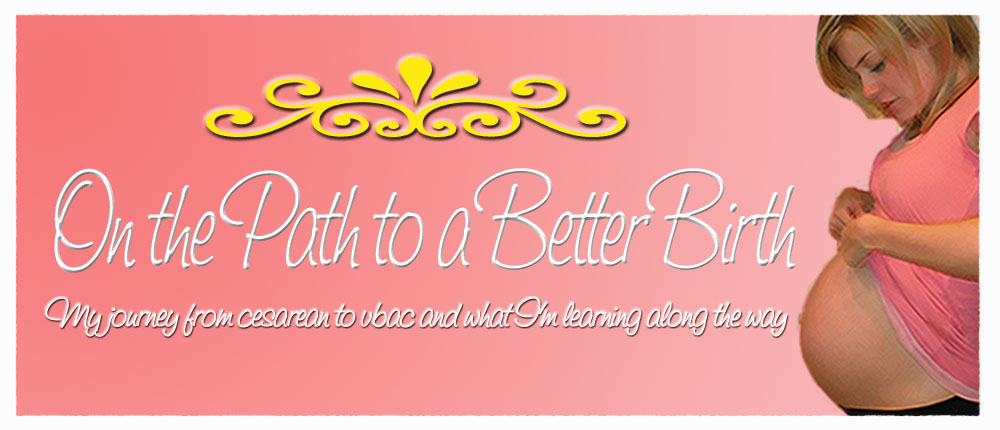 As I'm sure everyone has heard the heartbreaking news about our AZ Treasurer who lost his wife and newborn son due to complications during her delivery. My heart goes out to him and his family. While Kerry Martin's complications were very rare, I feel that this has definitely drawn attention to the subject of maternal mortality. I found a link to the following information from the most recent post at NursingBirth. This fact sheet originally came from The Safe Motherhood Quilt Project which aims at bringing awareness to the high maternal mortality rate in the US, as well as remembering those mothers who have died due to pregnancy related causes. I found this information to be very eye opening.
As I'm sure everyone has heard the heartbreaking news about our AZ Treasurer who lost his wife and newborn son due to complications during her delivery. My heart goes out to him and his family. While Kerry Martin's complications were very rare, I feel that this has definitely drawn attention to the subject of maternal mortality. I found a link to the following information from the most recent post at NursingBirth. This fact sheet originally came from The Safe Motherhood Quilt Project which aims at bringing awareness to the high maternal mortality rate in the US, as well as remembering those mothers who have died due to pregnancy related causes. I found this information to be very eye opening.Maternal Mortality in the USA
A Fact Sheet
• The World Health Organization reported in 2007 that 40 other countries
have lower maternal death rates than the United States.
• The Centers for Disease Control (CDC) report that there has been no
improvement in the maternal death rate in the United States since 1982.
• The CDC estimated in 1998 that the US maternal death rate is actually 1.3
to three times that reported in vital statistics records because of
underreporting of such deaths. (1)
• The CDC reported in 1995 that the “magnitude of the pregnancy-related
mortality problem is grossly understated.” (2)
• The rate of maternal death directly related to pregnancy or birth appears
to be rising in the United States. In 1982, the rate was approximately 7.5
deaths per 100,000 live births. By 2004, that rate had risen to 13.1 deaths
per 100,000 births. By 2005, the rate was 15.1 deaths.
• The CDC estimates that more than half of the reported maternal deaths
in the United States could have been prevented by early diagnosis and
treatment. (1)
• Autopsies should be performed on all women of childbearing age who die
if there is to be complete ascertainment of maternal deaths.
• Numerous studies have found that in 25 to 40 percent of cases in which an
autopsy is done, it reveals an undiagnosed cause of death.
• In the 1960s, autopsies were performed on almost half of deaths.
.• The United States now does autopsies on fewer than 5 percent of hospital
deaths.
• Reporting of maternal deaths in the United States is done via an honor
system. There are no statutes providing for penalties for misreporting or
failing to report maternal deaths.
• In the United States, the risk of maternal death among black women is
about 4 times higher than among white women. For 2005, the rate was 36.5
deaths per 100,000 live births.
• Most countries with lower maternal death rates than the United States use
a different definition of “maternal death”, which, unlike the United States’
definition, includes those deaths directly related to pregnancy or birth
which take place during the period between six weeks postpartum and
one year after the end of pregnancy.
• Complete and correct ascertainment of all maternal deaths is key to
preventing maternal deaths.
• The Confidential Enquiry into Maternal Deaths in the United Kingdom
(England, Scotland, Wales, Northern Ireland), which has functioned since
1952, is the system believed to have achieved the most complete
ascertainment of maternal deaths while guaranteeing utmost
confidentiality. See http://www.cemach.org.uk/
• The maternal mortality rate for cesarean section is four times higher than
for vaginal birth and is still twice as high when it is a routine repeat
cesarean section without any emergency. (3,4)
• There is currently no federal legislation mandating maternal mortality
review at a state level.
• Fewer than half of the states conduct state-wide maternal mortality
review.
• Hospitals do not release reports of maternal deaths to the public; hospital
employees are required to keep such information to themselves.
• The Healthy People 2010 Goal is no more than 3.3 maternal deaths per
100,000 births. This is a goal that other nations have achieved.
1. Morbidity and Mortality Weekly Report, September 4, 1998, Vol. 47, No. 34.
2. Atrash HK, Alexander S, Berg CJ. Maternal mortality in developed
countries: Not just a concern of the past. Obstet Gynecol 1995;86:700-5.
3. Petitti D et al. In hospital maternal mortality in the United States. Obstet
Gynecol, Vol 59, pp. 6-11, 1982.
4. Petitti D. Maternal mortality and morbidity in cesarean section. Clin Obstet
Gynecol, Vol. 28, pp. 763-768, 1985.
5. The Confidential Enquiry into Maternal Deaths in the United Kingdom
www.cemach.org.uk
Prepared by Ina May Gaskin, MA, CPM
Coordinator for the Safe Motherhood Quilt Project
149 Apple Orchard Lane
Summertown, TN 38483
www.rememberthemothers.net
http://www.inamay.com/


